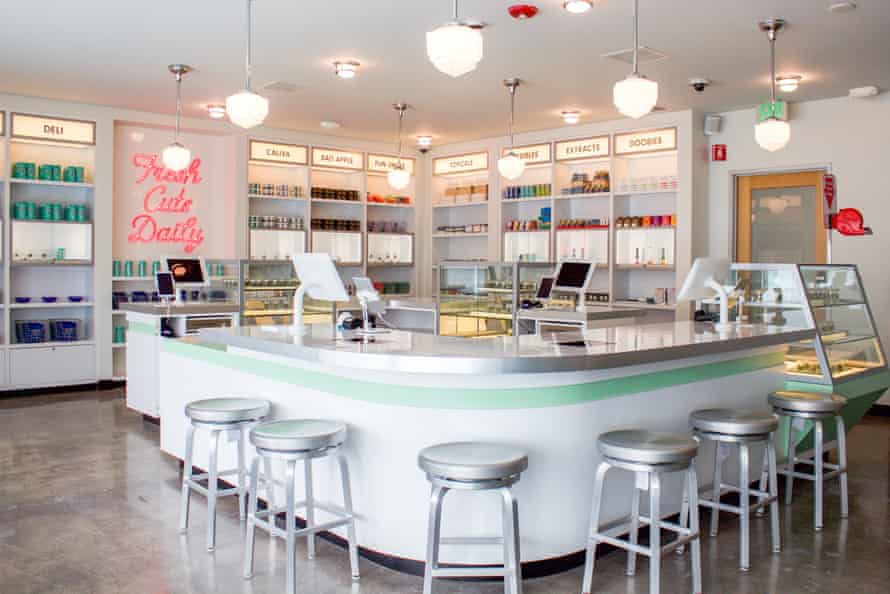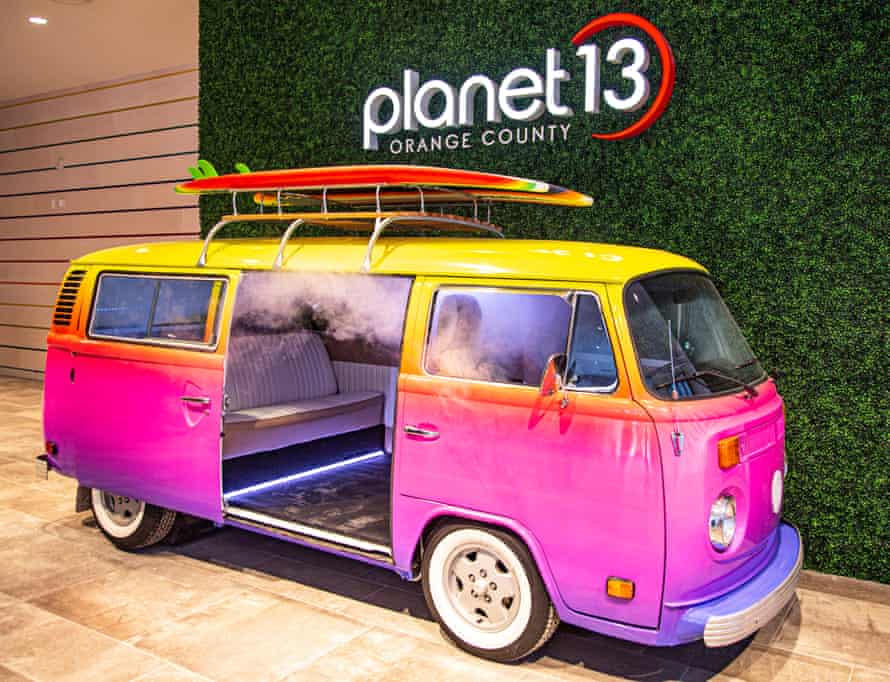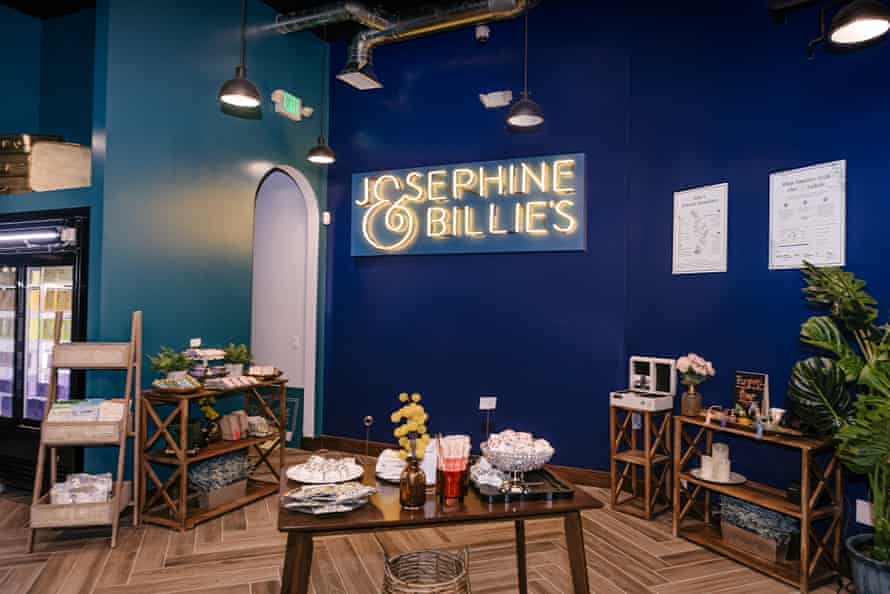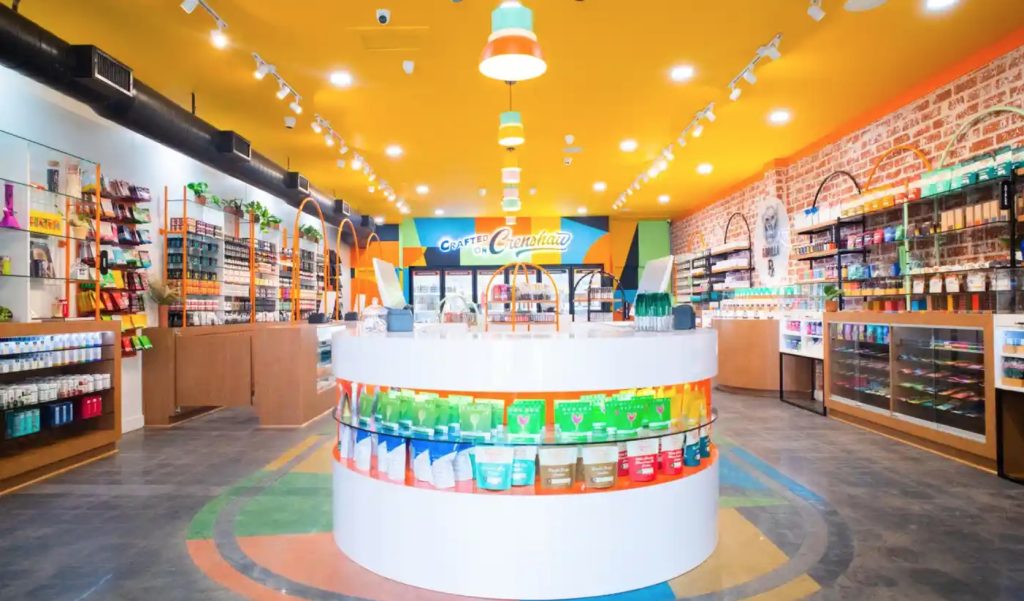blog
The Black women redefining California’s cannabis market
The Black women redefining California’s cannabis market – one curated store at a time
When Kika Keith and her daughter opened a cannabis dispensary in South Los Angeles last year, they faced a design challenge: how could they create a store where older Black customers, who had seen all the ravages of the “war on drugs”, would feel comfortable making a purchase?

It had been a tough battle for Keith to open a dispensary as a Black woman, in a post-legalized marijuana market where most of the business owners had become white men. She and her daughter, Kika Howze, wanted their store, Gorilla Rx Wellness Co, to reflect their focus on neighborhood investment and their hip-hop aesthetic.
But they didn’t want to emulate the sleek hip-hop branding of youth-focused cannabis companies like Cookies or Stiizy, the kind of “shiny” dispensaries that had “music videos playing with girls’ breasts out”, as Keith put it.
They would have Los Angeles-born hip-hop stars like Kendrick Lamar and ScHoolboy Q on their soundtrack, but they wanted their dispensary to feel like a grocery store, with products more reminiscent of a Whole Foods vitamin aisle.

“We want to model what a community-first dispensary looks like, and at the head of our community is our elders,” Keith said.
More than five years after California voters approved the sale of recreational marijuana, the legal weed market still faces plenty of economic and social challenges. But there’s also a wide variety of legal dispensaries across the state working to erase the stigma of criminalization and attract new cannabis consumers.
What California’s legal marijuana stores actually look and feel like has been a key part of that redefinition. New entrepreneurs like Keith are continuing to push the boundaries of dispensary design, particularly when it comes to appealing to a broader range of Black consumers, while simultaneously pushing back against the “whitewashing” of the legal cannabis market.
“Corporations conveniently forget that a lot of cannabis culture is centered around Black culture,” said Ebony McGee Andersen, the chief operating officer of Josephine & Billie’s, another South Los Angeles dispensary operated by and for Black women. “You can’t fake that. You can’t appropriate that.”
Across California, there have been all kinds of experiments in legal dispensary design – some more successful than others. The past five years has introduced giant weed tourist attractions like Orange County’s Planet 13, a marijuana theme park of a store that features a fake smoke-filled VW party bus with surf boards on top, and Deli by Caliva, a chain of dispensaries modeled after 1950s-style neighborhood sandwich counters.

There was, briefly, a luxury shop within a Beverly Hills department store called The High End, which sold luxury French rolling papers and $1,100 bongs. (The department store, Barneys, filed for bankruptcy later that same year.)
In Los Angeles, one of the clear winners in the race to define the aesthetic of the legal dispensary has been MedMen, a national cannabis company often referred to as the “Apple store of weed” for its sleek Scandinavian design and digital service.
But as new companies try to find space in the challenging legal market, opening another dispensary with the same bland “Apple store” aesthetic is not enough, said Melanie Coddington, the Oakland-based founder of Sungrown Studio, which specializes in dispensary design.
“Consumers want to know the owner’s story now,” said Coddington, who has designed at least 20 dispensaries across the country since 2019.

As someone who previously focused on designing high-end residential properties, Coddington opened a cannabis design-practice with the goal of creating stores “that feel open, safe, welcoming to women”, in contrast to the medical marijuana dispensaries that felt “shady” and often “looked like a sad shabby dentist’s office”.
To begin the design process, Coddington says, she gives new dispensary clients a style quiz with questions like, “Who is your ideal celebrity endorser? Are you more Martha Stewart, or Snoop Dogg or Reese Witherspoon?”
The latest trend in cannabis design is “wellness”, with dispensaries that have “a yoga studio vibe, or a relaxing spa vibe”, she said.
The sheer variety of California’s legal marijuana products – smokable, drinkable, edible, topical – “can be a little overwhelming” for consumers, and one of the challenges for dispensary design is creating an atmosphere were “canna-curious” newbies feel comfortable asking questions, said Mindi Basha, the vice- president of retail at the Parent Company, one of California’s largest cannabis corporations.
A little magic, a lot of product education
Wyllow, a cannabis brand opening a dispensary in Beverlywood on 4/20, is modeling itself on the boutique experience of a Diptyque candle store or a Jo Malone perfume store, but with a distinctive Los Angeles twist.
The dispensary looks like a tiny, neon-lined cathedral, with LED lights that shift color over the course of the day, and four velvet-covered banquettes for one-on-one consultations with a cannabis “atelier”. The store will have a sound installation at the door with recordings of “rustling rolling paper, exhaled smoke and taps on an ashtray”, and customers will start their visit by smelling different terpenes, the compounds that give weed strains their distinctive scent and flavor, to understand what profile they might enjoy most.
Camille Roistacher, Wyllow’s founder, is modeling her luxury customer service on the Nordstrom’s shoe department, where she worked in high school and college. Customers would “ask for one pair of shoes, and you had to show them four pairs of shoes”, she said.
Roistacher, who is Black and Mexican, came to the cannabis industry after years of working in tech. Her dispensary will introduce customers to a large proportion of women and Bipoc-owned cannabis brands, something she knows is crucial from her own struggle to get “shelf space” in dispensaries for her own cannabis brand.
At Josephine and Billie’s, which brands itself as the first dispensary in the United States designed specifically by and for women of color, allowing customers to pick up and touch the products for sale was a key part of making the shopping experience feel safe, according to founder Whitney Beatty and Andersen, the chief operating officer.
They didn’t want customers to feel profiled or like they were in a Walmart, “which has their black hair products behind glass”, Andersen said. Instead, their model for the customer experience was a combination of Disneyland and Sephora: a little magic and a lot of hands-on product education.

The store is named after Black artists Josephine Baker and Billie Holliday, who faced persecution for smoking marijuana, and is designed to resemble a cannabis speakeasy “tea pad” of the American Jazz Age, where Black patrons could smoke and talk in a relaxing environment. There’s a timeline on the wall with a long history of centuries of marijuana’s medicinal and social uses, putting the recent painful decades of prohibition in broader context
The store’s speakeasy-style entrance, where customers have to say a password to duck behind a velvet curtain into the main retail space, has resonated with customers, Andersen said, giving them a moment to take a breath and feel like they’re transitioning into a less anxious space.
It’s a contrast not only with the long criminalization of marijuana but also with the uncomfortable atmosphere of many male-owned dispensaries, which were marked by “a lot of sexism and misogyny”, Andersen said.
Andersen and Beatty obsessed over the details of their store’s design, building a big bathroom for customers to use and selecting decor that would make the space feel “like your auntie’s living room”, so much so that they almost put a plastic cover on the store’s couch.
With older Black women customers in mind, they’re also careful to stock a wide variety of cannabis products that don’t have to be smoked or inhaled, like creams and salves, or cannabis-infused honey, something that older women in their own families who were against marijuana were more willing to embrace.
Gorilla Rx founder Keith, whose father was Rastafarian, was raised in a “really cannabis-conscious” family, where the plant was important “for wellness and spiritual purposes”.
But in South Los Angeles, she said, the “war on drugs” left a legacy not only of incarceration and criminalization targeting Black families, but also of selective enforcement, with “grimy” illegal trap shops allowed to keep operating in Black neighborhoods, even as they were cleared out of wealthier and whiter neighborhoods on the city’s west side.
“It was really important that we created a space that was welcoming and inviting to our elders in the community and that had the ability to be wellness-focused and erase the stigma,” Keith said.
Working with Jocelyn Williams, a Black female designer, Keith and her daughter built a light-filled store decorated with bright color-blocking, with “joyful” design inspirations that included Keith’s grandmother, who kept her Christmas tree with its bright lights in her house for six months of the year; the Hello Kitty store in the mall she loved as a child; and a roller skating rink, which inspires the oval path customers take as they circle through the dispensary’s different options.
Even before they made much of a social media marketing push, Howze said, the store repeatedly went viral on social media, with customers celebrating the existence of Los Angeles’s first Black woman-owned dispensary, and praising the comfort of shopping at a weed store with multiple Black female employees.
To avoid the “post-gentrification aesthetic” of “this store is really great but I can’t afford anything in it”, Howze said, Gorilla Rx offers everything from a “$10 eighth to a $90 eighth”.
And to help Black customers “reclaim their wellness”, the store expanded their hours to open at 8am, Howze said, in order to cater to registered nurses and others stopping by the store before their morning shifts, for salves they can use for pain relief on their knees or wrists as they prepare to be on their feet all day.
Convincing older Black Americans that cannabis products are safe to use can still be an uphill battle, Howze said: some of their younger customers will buy cannabis salves that they plan to repackage and give to relatives who need the pain relief but hate the idea of marijuana.
But, she said, “There are other folks who come in with their parents. That’s a joy to see.”
… we have a small favour to ask. Millions are turning to the Guardian for open, independent, quality news every day, and readers in 180 countries around the world now support us financially.
We believe everyone deserves access to information that’s grounded in science and truth, and analysis rooted in authority and integrity. That’s why we made a different choice: to keep our reporting open for all readers, regardless of where they live or what they can afford to pay. This means more people can be better informed, united, and inspired to take meaningful action.
In these perilous times, a truth-seeking global news organisation like the Guardian is essential. We have no shareholders or billionaire owner, meaning our journalism is free from commercial and political influence – this makes us different. When it’s never been more important, our independence allows us to fearlessly investigate, challenge and expose those in power.

